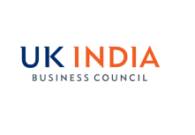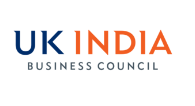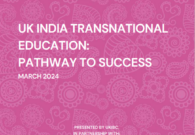The Indian Menswear Market
Despite a gloomy forecast for India’s flagging retail sector, industry experts argue that the growth trajectory of the country’s menswear market continues to be at an all-time high, showing no signs of slowing down
Recent studies by renowned Indian retail consultancy, Technopak have found the Indian menswear sector to be the fastest growing luxury segment in the country, escalating at a compounded annual growth rate (CAGR) of 9 per cent per annum. At this rate, it is estimated to expand to reach a massive size of GBP 200 billion (1,76,000 crores) by 2020!
This rapid growth can be attributed to several key factors and emerging trends which have been influential in shaping the buying habits of the modern Indian man and transforming the business dynamics of this virtually untapped market:
• Higher disposable incomes, more sophisticated tastes, increasing brand awareness and greater fashion consciousness have led to a desire for quality and better service standards above all else.
• Over the past few years there has been a marked shift in demand from bespoke tailoring to luxury ready-to-wear especially for men under 25 and over 35 (according to image consultant and grooming coach, Yatan Ahluwalia)
• These evolving sartorial styles have sparked off an influx of top international labels ranging from premium brands such as Gucci, Hugo Boss, and Armani, to mid-upmarket brands like Thomas Pink and Tie Rack as well as funky, street-wear brands such as Diesel, and Superdry – all of whom have flooded the market to cater to the new demand for ready-to-wear men’s apparel.
• In addition, according to London-based designer brand Paul Smith, there is also a rise in demand for smart businesswear and occasion-based formal wear by young working professionals who perceive a good suit or jacket to be a worthwhile investment, essential for a work wardrobe. To capitalize on the potential presented by this new youth segment, Paul Smith is currently in the process of opening its third store in Mumbai’s Palladium Annexe in addition to its existing two in Delhi and Bangalore.
• Menswear is easier to sell in large quantities as standardisation (in terms of sizes and specifications) is simpler because it tends to be more westernized as compared to women’s wear.
• Men also tend to be fundamentally quick shoppers who take faster decisions and show more brand loyalty.
• This burgeoning consumer base has been further widened by the proliferation of global fashion brands beyond the metros to Tier 2 cities and rural areas which are home to customers with deep pockets and high aspirations.
• Heightened competition from international firms has incentivized domestic players to significantly improve their own consumer experience and build brand loyalty by producing innovative designs and adopting international best practices in retail, service, visual merchandising and processes. According to Jacob John, brand head of Louis Philippe, the presence of foreign brands has altered both consumer mindsets as well as retailers’ strategies. “As far as Indian brands are concerned, this has actually resulted in a positive rub off with consumers now expecting more options from Indian brands. At a retail level, newer and exciting formats are being developed in line with international trends and practices, leading to better consumer comfort and delight,” John said.
• Well established Indian brands such as Siyaram Silk Mills Ltd, one of India’s oldest men’s apparel manufacturers, continue to maintain an edge over their international counterparts because of their inherent understanding of the Indian consumer and his unique characteristics. For example, as pointed out by Michael Pike, Founder of Brandspoke, a brand development consultancy with commercial expertise in India – Indians equate off-the-peg suits with luxury and therefore prefer to purchase these from foreign brands but for bespoke tailored suits they tend to be more loyal to their local tailors who offer reasonable options at more affordable price points. Apart from Siyaram, India’s traditional men’s clothing manufacturers include Madura Garments, Arvind Mills, Provogue, Zodiac Clothing and Raymonds all of which have successfully managed to hold their own against their Western rivals.
There is no doubt that the Indian menswear sector offers tremendous potential and lucrative new opportunities for forward-thinking UK brands who should waste no time in establishing their presence in this booming marketplace.
By Tara Panjwani
Email: tara.panjwani@ukibc.com
Tel: +44 (0)20 7592 3040







